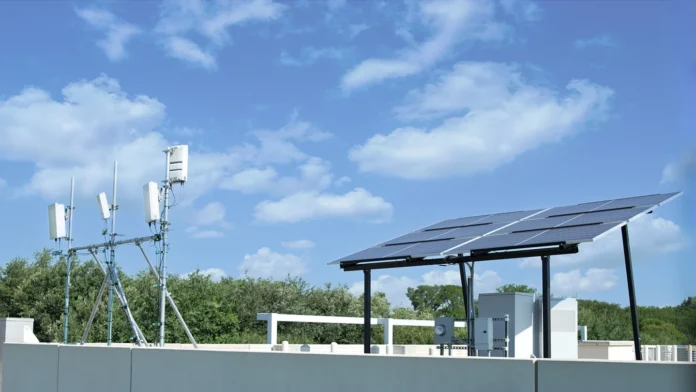The 5G site in Plano, Texas is powered by solar energy and leverages integrated lithium-ion batteries
Ericsson this week activated a 5G site in Plano, Texas powered by solar energy and leveraging integrated lithium-ion batteries. According to Kevin Zvokel, the company’s SVP and head of networks North America, the site “serves as a tangible proof point of Ericsson’s leading position in building sustainable mobile networks.”
In addition to the solar panels and lithium-ion batteries, the 5G site boasts an Ericsson mid-band Massive MIMO radio configuration, RAN processor and a controller for hybrid energy operation and control. The site also features capabilities like load shifting, peak shaving and demand response to use or charge the batteries as required. Ericsson said it powered the site for 24 hours using renewable energy.
“This proof-of-concept, which is a more sustainable alternative to traditional off-grid sites which are typically powered by fossil fuel-based generators, is designed to show operators that, by intelligently orchestrating multiple energy sources and storage technologies in unison, they can reduce OPEX related to energy costs and help reach Net Zero goals while enabling future revenue streams from utility companies,” the company said in a statement. “With a unified intelligent management system and power management, including solar power and Lithium-ion batteries, the site continuously optimizes for the best energy source.”
Ericsson also shared that the Texas site may also be used as a test bed to trial radio hardware and software solutions that improve energy efficiency in combination with smart-site solutions. “It opens additional avenues for exploration, including collaboration with utility companies in areas such as grid frequency, voltage regulation, and demand response,” the company added.
Phase Two of the project, plans for which are already underway, will explore additional green energy sources such as hydrogen-based generators and will display advanced Ericsson software features such as its Policy-based Battery Saver, where operators can switch off specified radio frequencies to reduce energy consumption.

